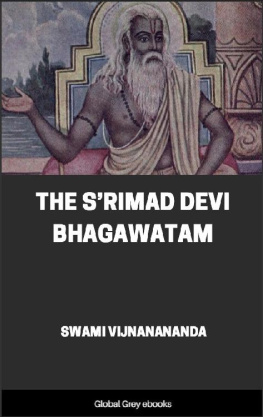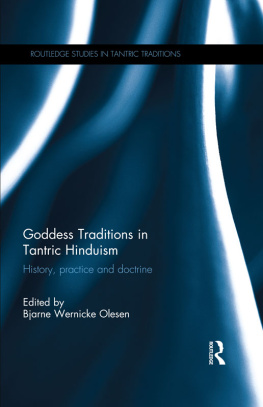The right of Anway Mukhopadhyay to be identified as author of this work has been asserted by him in accordance with sections 77 and 78 of the Copyright, Designs and Patents Act 1988.
All rights reserved. No part of this book may be reprinted or reproduced or utilised in any form or by any electronic, mechanical, or other means, now known or hereafter invented, including photocopying and recording, or in any information storage or retrieval system, without permission in writing from the publishers.
Routledge Studies in Asian Religion and Philosophy
Stras, Stories and Yoga Philosophy
Narrative and transfiguration
Daniel Raveh
Buddhist Perspectives on Free Will
Agentless agency?
Edited by Rick Repetti
Islam and Cultural Change in Papua New Guinea
Scott Flower
Science and Socio-Religious Revolution in India
Moving the mountains
Pankaj Jain
Indian Philosophy and Meditation
Perspectives on consciousness
Rahul Banerjee and Amita Chatterjee
Why Traditional Chinese Philosophy Still Matters
The relevance of ancient wisdom for the global age
Edited by Ming Dong Gu
The Goddess in Hindu-Tantric Traditions
Devi as Corpse
Anway Mukhopadhyay
Divinizing in South Asian Traditions
Edited by Diana Dimitrova and Tatiana Oranskaia
Contents
Guide
My friend, Dr. Sagnik Dasgupta, first told me about the book by Nigurananda on the Sati pithas . This book has helped me a lot in my research on the Shakti pithas . Prof Vanashree, Professor Emerita, Dept of English, Banaras Hindu University, who was my PhD supervisor and my colleague at BHU, is always a source of inspiration for me. My thanks go to my former colleagues and acquaintances in BHU and Varanasi at large, who have been a steady source of support and inspiration. Thanks are also due to my colleagues at the University of Burdwan, who have intellectually stimulated me in various ways.
My student, Sri Utkarsh Chaubey, a Shakta devotee himself, has always inspired me in this project and hence deserves my thanks. My heartfelt thanks also go to the priests and other people in various Shakti pithas who have given me significant information on the pithas and the pitha deities. Special thanks go to Dr Michael Paraskos who made it possible for me to visit the birthplace of Aphrodite in Pafos, the famous Petra tou Romiou, while I was in Cyprus for the Othellos Island Conference in 2017. I received a lot of information on Aphrodite Kypris from Dr Rita Severis at CVAR, Nicosia, Cyprus. Thanks go to her for allowing me to read some books on Aphrodite and Cyprus in the library at CVAR. I deeply thank Ruth Keshishian, the owner of the Moufflon Bookshop in Nicosia, who gave me a lot of information on Aphrodite and introduced me to important books on Aphrodite. Thanks go to Dr Sukanya Dasgupta as well, who introduced me to Ruth Keshishian.
I must thank the staff of the libraries of the University of Burdwan and Banaras Hindu University, and also the shopkeepers of various bookshops in Varanasi selling books on tantras, puranas and Shaktism, for the patience with which they entertained my queries about books on Shaktism and supplied me with necessary books without which this book could not have been written.
I must acknowledge the constant support I have received from my parents and sister, and also from the members of my extended family.
And finally, my heartfelt thanks go to Dr Dorothea Schaefter and Dr Lily Brown, who, on behalf of Taylor & Francis, provided all kinds of support to me during the entire process of the publication of this book. In the same vein, I thank the peer reviewer (whose name I dont know) for his/her valuable suggestions, and especially for the suggestion that this book might be useful for certain areas and disciplines which I myself did not think of.
Anway Mukhopadhyay
Appendix I
A brief outline of the narrative of Sati in the Mahabhagavata Upapurana
The Mahabhagavta Upapurana is a Hindu mythological text grounded in a very strong Shakta ideology. Like the more celebrated Devi Bhagawatam , it places the Mother Goddess at the heart of the universe and presents Her as the Formless Absolute who, out of Her own desire, creates the world of relativity, that of phenomena. It is She who gives birth to the Hindu Trinity: Brahma, Vishnu and Maheshvara.
I will summarize the relevant chapters or the relevant segments of certain chapters from this text so that the reader may get an idea of the way in which this text radically alters the patriarchal construction of Sati merely as an imitable model of wifely virtue. This outline, I hope, will effectively uphold the Shakta version of the Sati myth in which Sati is not just the docile wife of Shiva but rather the avatar of the Creatrix of Shiva himself.
Chapter 3
This chapter presents the conversation between Mahadeva (Shiva) and the Sage Narada, in the course of which Mahadeva narrates to Narada the history of the creation of the phenomenal world. Before the emergence of the phenomenal universe, there was no variegation in the (feminine) Eternal Entity, the Prakriti who is beyond speech, full of bliss and wisdom, the very nature of Sat (Truth/the Real). Then, suddenly, she was moved by the desire to create the universe and she, in spite of being formless, assumed a goddess-form playfully. This was the beginning of the phenomenal world, the world of variegation and relativity. Then, gradually, she created the Trinity Brahma, Vishnu and Maheshvara, and ordered them to be engaged in the tasks of creation, preservation and dissolution of earthly beings. She made it clear that her will would be the ultimate controlling force in this threefold task assigned to the Trinity. She said that she would take up the forms of their consorts and, especially, becoming the consort of Shambhu/Shiva/Maheshvara, she would continue to awaken in the female halves of all the species the desire to bear offspring. Through all the female beings, thus, she would project herself as the birth-giving force, out of her own will . Shiva, then, became engaged in an austere meditation on the Great Goddess, to get her as his own wife. When Vishnu came to know of this, he too began to meditate on the Devi, for the same purpose. Brahma too followed the footsteps of the other two gods, as he too wanted to get her as his consort.
The Great Goddess, Prakriti (Great Nature) came to them to test the substantiality of their tapasya (penances), to examine how far they had ripened in their spiritual life through the austere contemplation on her. She assumed a frightening form and approached the three gods. Both Brahma and Vishnu were frightened, and their hearts were shaken with terror. Thus, their tapasya was interrupted. However, when the Devi went to Shiva to disturb his meditation, he understood that it was none other than the Great Goddess who was present in front of him. Knowing this, he became engrossed in more profound meditation on the Devi. Pleased with the steadfastness of Shiva, Devi agreed to become his consort with her whole Self and also became the river Ganga, flowing in the heavens. However, as Vishnu and Brahma could not pass the test set for them by her, she only turned parts of her Self into their consorts. Then Brahma created the entire world.














